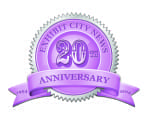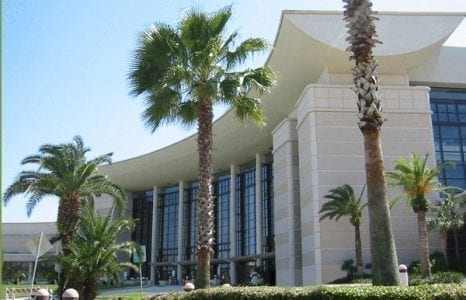 What does it mean to be green? Does it mean recycling or using solar energy? A lot of images and interpretations come to mind when the term is brought up, and those in the exhibitions industry are hearing a lot about green lately.
What does it mean to be green? Does it mean recycling or using solar energy? A lot of images and interpretations come to mind when the term is brought up, and those in the exhibitions industry are hearing a lot about green lately.
The difficulty lies in the show manager’s hands to decipher what all of it means, and what decisions will be right for their event. Many convention centers throughout the world are now changing the standards of operation across the board to become more environmentally sustainable, and offer specific services as well as their own knowledge to show managers.
“There’s a lot of noise out there as far as what you should do, and it can get confusing,” said Lindsay Arrell, sustainability manager, Colorado Convention Center (CCC). “If we could all just move forward in a similar direction and share a common goal, I think that would be a huge step.”
The Green Meetings Industry Council, along with the U.S. Environmental Protection Agency and hundreds of volunteers from North America and Europe, may have the solution when it comes to embracing a universal green language. In order to get everyone on the same page, ASTM International, formerly known as the American Society for Testing and Materials, put their stamp of approval on a collection of standards that seek to provide guidelines and performance measurements for creating sustainable events.
Unlike other certifications, the ASTM standards focus specifically on taking a comprehensive look at everything that goes into meetings and tradeshows. Other certifications focus on one particular aspect, such as Leadership in Energy and Environmental Design (LEED), which has strict guidelines for the way a building is built.
LEED is a set of rating systems for the actual infrastructure of a venue, and is an example of something that falls under the umbrella of ASTM standards of what a venue can offer a show manager without added cost. In other words, LEED Certification may already be in place at a convention center, whether a show manager asks for it or not.

With a campus that spans 400 acres and about 7 million-square feet, the Orange County Convention Center (OCCC) became the world’s largest LEED Gold Certified building in 2013, a process that took about three years.
“Sustainability is one of our core values and is ingrained in our culture,” said Jan Addison, deputy general manager, OCCC. “The most challenging part of the process initially was getting some of our employees to buy in and become engaged and fully committed to our efforts. Today, the processes are ingrained in our thinking and our day-to-day commitments.”
The OCCC was also the third convention center in the world to achieve the ASTM level one certification, and the first ISO 14001-certified convention center for environmental system management in the U.S.
“You can have a LEED certified building, but it might not be managed in a sustainable way,” Arrell said. “I think that’s a real disconnect and a lot of people don’t understand that.
“I think (ASTM) is the only standard out there that specifically addresses our industry,” Arrell continued. “There’s no other standard that does that, and it was created by professionals in our industry. It addresses the nine sectors that a planner deals with. A lot of it is focused on staff management and communication, or how planners and suppliers work together.”
In 2012, the CCC received the first ASTM Environmentally Sustainable Meetings, Events, Trade Shows and Conferences certification. In 2014, there are more than a dozen global locations that are also on the official ASTM registry.
Placing sustainability at the top of the priority list in 2007, Colorado hired Arrell as the sustainability manager to be the front runner of the program – she was the first to hold such a position in the country.
The following year marked the start of her work with the EPA and GMIC to look at all sectors that make up an event – staff management and environmental policy; communication; waste management; energy; air quality; water; procurement; and community partners.
Driven by ASTM protocol, the standards were developed in a tiered system to allow for implementation on a voluntary basis for show managers to create a more sustainable meeting or event in a measurable way.
“They’re cost neutral at level one, with the exception of time, there’s not a lot of capital improvement criteria here. You don’t have to go out and get a new HVAC system to be sustainable,” Arrell explained when asked about the cost effectiveness of the ASTM standards. “In reality, it can save money, it can save time and there are a lot of benefits to your operation besides saving the planet. It’s a good business practice for a lot of other reasons besides the environment.”
While industry recognition and acceptance of the sustainability wave may be slower paced than some would like, many convention centers are taking the initiative themselves to make big changes and lasting impact.
Katarina Tesarova, executive director of global sustainability at the Sands Expo and Convention Center in Las Vegas, said that the Sands now offers clients a green meeting concierge, or someone to be the main point of contact available to answer any questions a company or organization may have about not only being sustainable, but to also keep it top of mind.
“Oftentimes, if a client requests a green meeting early on, in the heat of things later on down the road it becomes not as important,” Tesarova said. “We’ve streamlined it so there’s a single point of contact within our organization to help the client figure out everything related to green meetings and sustainability. The feedback from our clients on this has been very positive, because they don’t have to figure out who to talk to about different items or options.”

The Sands is also a venue that has an ASTM green meetings certification, something that seemed a natural course of action after years of developing and enhancing their own sustainable programs.
“I think these standards were a huge benefit for the industry,” Tesarova said. “Having sustainable or green meeting event standards allows us to showcase a high level of responsibility when conducting business. They are structured in such a way that allows for our clients to pick and choose what level is suitable for them.”
Keeping track of what sustainable efforts were made throughout an event is important to the client as well, Tesarova said, which is why the Sands also provides environmental impact statements after each event.
“An impact statement is a report that summarizes and presents this info to clients in a really easy-to-understand format that reports things such as how much waste was generated, energy, water, carbon emissions and all sustainable measures that were part of an event,” Tesarova said.




























